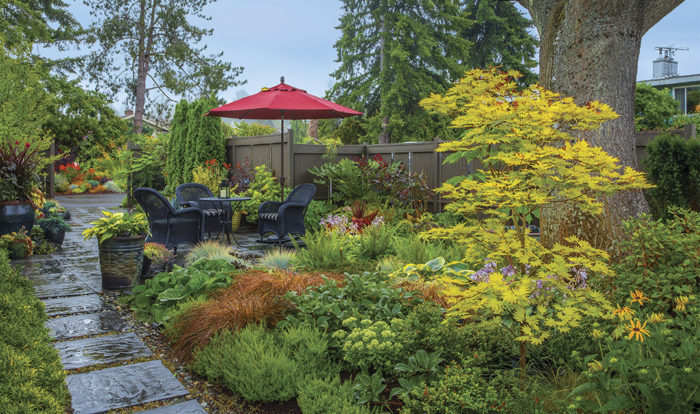
Most gardeners come to a point in their lives when they have to ask themselves if they can still keep up with Mother Nature. Not only does age make it more difficult to get the job done, but it also makes us view our time spent in nature differently. For me, it was that I needed a smaller garden where I could spend more time sitting and enjoying the company of friends and family instead of bending over to pull weeds or deadhead.
While I made sure my previous garden was drought tolerant, I also insisted that it featured year-round textural interest, color, and fragrance.
Moving to a smaller garden was always in my family’s plans. Our main objective was to design what I call a “time-out terrace” where we could enjoy a relaxing lifestyle. We wanted our courtyard to feel private, but we also wanted to be connected to the community around us. While this new garden is smaller and requires much less work on my part, it is just as beautiful as the labor-intensive garden I left behind. Here is how you, too, can reduce maintenance without sacrificing beauty.
The “time-out terrace.” The goal of this garden was to sit and enjoy it, not fuss over maintenance. Hardworking varieties planted in sweeps are the key.

Not much to work with. A little work in the beginning can transform an area of almost nothing to a lush, low maintenance garden.

Choose the Right Plants
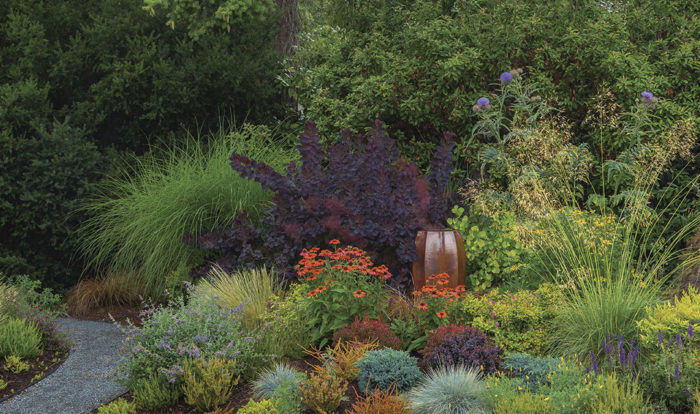
Plants to use in your design should make your life easier. They should work for you more than you work for them, meaning they should regularly be adding something to your design, but you should rarely have to attend to them. Take ‘HGC Pink Frost’ hellebore (Helleborus × ballardiae ‘HGC Pink Frost’, USDA Hardiness Zones 5–9), for example. It needs to be cut back only once a year, yet it provides flowers in winter and early spring and architectural glossy leaves all summer and into fall.
You should also use plants that look good in many situations. This will result in less time moving plants around and trying to figure out what should go where. ‘Cappuccino’ New Zealand sedge (Carex tenuiculmis ‘Cappuccino’, Zones 7–9) is the little black dress of the garden, jazzing up any sunny, well-drained spot no matter what else is planted there.
The same holds true for plants you already have: They need to do the work, not you. Editing is the most feared task of any plant lover. But ask yourself these questions: Do I really love this plant? Does this plant hold its own strong place in my design? Is this plant the right scale for this space, or do I constantly need to prune it?
Be practical and objective when reviewing your garden. Late winter tends to be the best time to do this, as the soil is soft and it’s easy to remove a plant. Also, you will not be seduced by colors and fragrance.
Another benefit of removing plants is that you increase the air circulation in your garden. Gardens need to breathe like we do. More air circulation reduces the potential for plant diseases (which require your time and effort to manage) and creates breeze corridors and possible views through the garden. Always keep the big picture in mind when editing and building a new garden.
If you are removing plants, consider giving them away. It will ease the pain of parting with an old friend. Plus, you will feel great about improving the beauty and health of your garden while reducing its maintenance needs.
Use more of the Same Plants
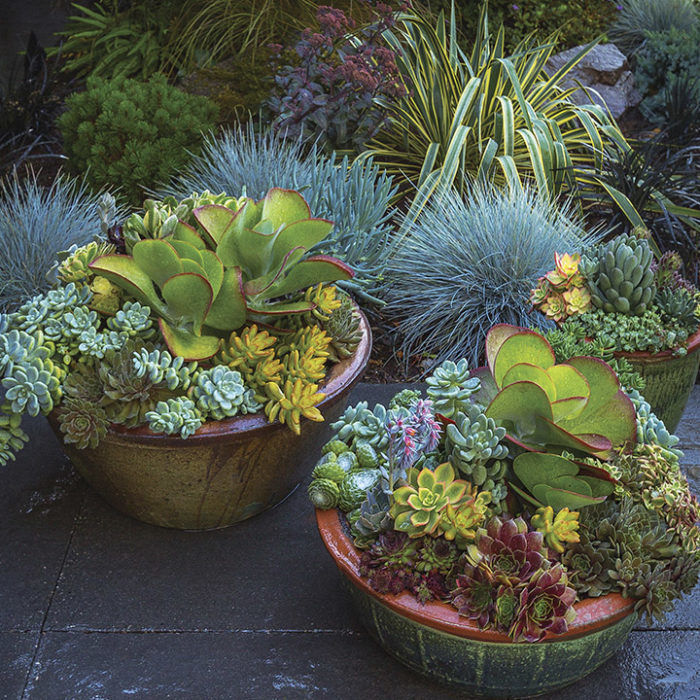
When you have found a plant that meets your requirements, design with it in groups, and try to place those groups near or among plants with similar cultural needs. Not only will this create a textural tapestry effect, it will greatly simplify any work you have to do in the garden.
Whether you’re using 3, 5, or 20 of the same plant to create large brushstrokes across your garden canvas, the effect is the same. Massing fewer varieties adds harmony and creates a calmer, more peaceful tone to the garden.
Groups of the same low-maintenance plants mean fewer tasks than if you had multiple plants with individual needs. And by grouping plants with similar needs, you can attend to those needs at the same time rather than going from area to area.
You can keep the impact of containers from being too much of a chore, too. Using succulents in containers gives me the excitement of exploring a different type of planting climate without having to move there. You can’t have a dry, desert-succulent garden and a Pacific Northwest garden on the same property, but you can enjoy both using containers, which are mini gardens.
Consider the soil as if it were in your landscape, and use plants that have like needs, water, and light in each container. I like to use succulents mostly because of the zero maintenance involved. Using these types of plants frees up my time from deadheading, which gives me more time to spend sharing my garden with friends during the long growing season in the Pacific Northwest.
Most types of succulents get along great together, and the combos are endless. In the Pacific Northwest, some of these varieties are not hardy but they are easy to overwinter indoors. Instead of purchasing annuals for summer color, I venture out into the nurseries in spring and enjoy choosing interesting combinations to last throughout the season and beyond.
Design
Reduce the Work, But not the Looks
For a garden that you can enjoy without thinking about all the work that it requires, keep these tips in mind.
1. Choose Hardworking Plants
Some people have to spend hours to look good; other people make it happen in just a few minutes. You want plants from the second group. A little effort once or twice a year is all it takes to keep them looking great.
2. Use More of the Same
You could perform different tasks on numerous plants throughout the year, or you could handle much of your work at once by repeating the same plant in the same area.
3. Space to Encourage Air Circulation
A lush garden is crammed with plants, which makes it hard for air to move and encourages disease. Judicious editing keeps air moving without adding noticeable holes in your design.
4. Group Plants with Similar Needs
Rather than plant A needing one thing, Plant B requiring something else, and Plant C needing a third thing, make sure Plants A, B, and C need the same thing.
Plants
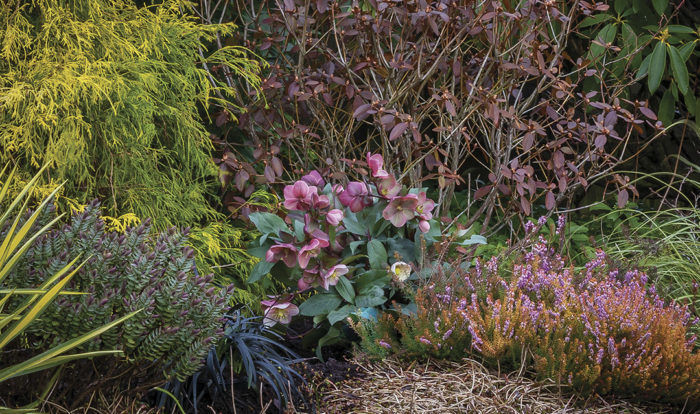
13 Hardworking Performers
1. Amber Jubilee™ ninebark (Physocarpus opulifolius ‘Jefam’, Zones 2–7)
2. Beyond Blue™ blue fescue (Festuca glauca ‘Casca 11’, Zones 4–9)
3. ‘Blue Star’ juniper (Juniperus squamata ‘Blue Star’, Zones 4–8)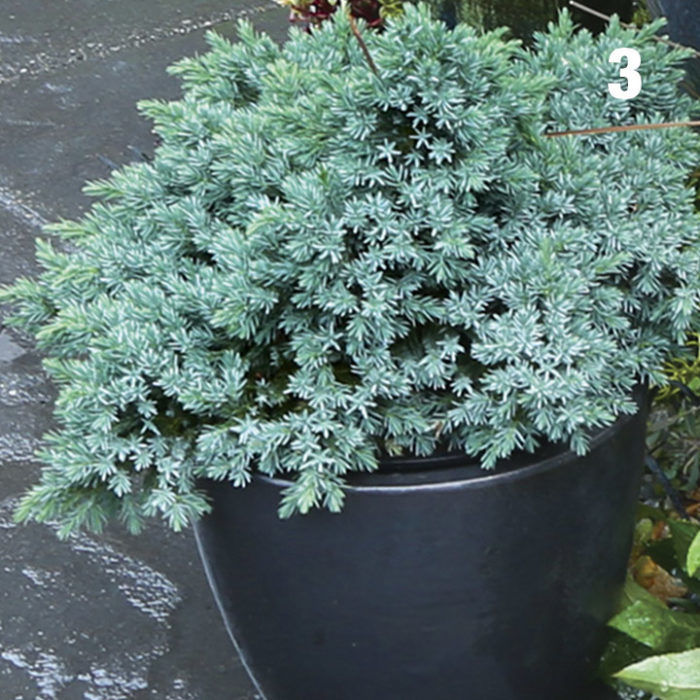
4. Golden Ruby® barberry (Berberis thunbergii* ‘Goruzam’, Zones 4–8)
5. Hellebore (Helleborus spp. and cvs., Zones 4–9)
6. Japanese maple (Acer palmatum and cvs., Zones 5–8)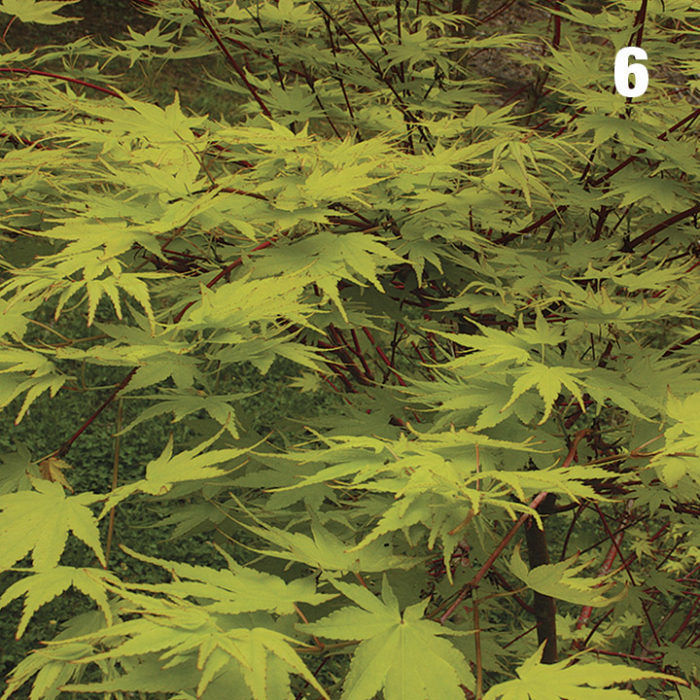
7. ‘Midwinter Fire’ redtwig dogwood (Cornus sanguinea ‘Midwinter Fire’, Zones 5–7)
8. Mondo grass (Ophiopogon planiscapus cvs., Zones 6–10)
9. Purple coneflower (Echinacea spp. and cvs., Zones 3–9)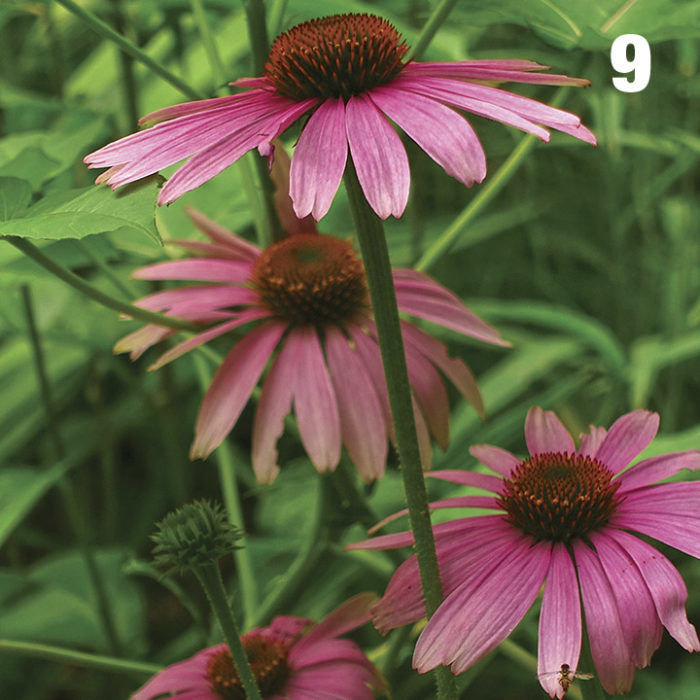
10. New Zealand sedge (Carex testacea and cvs., Zones 6–10)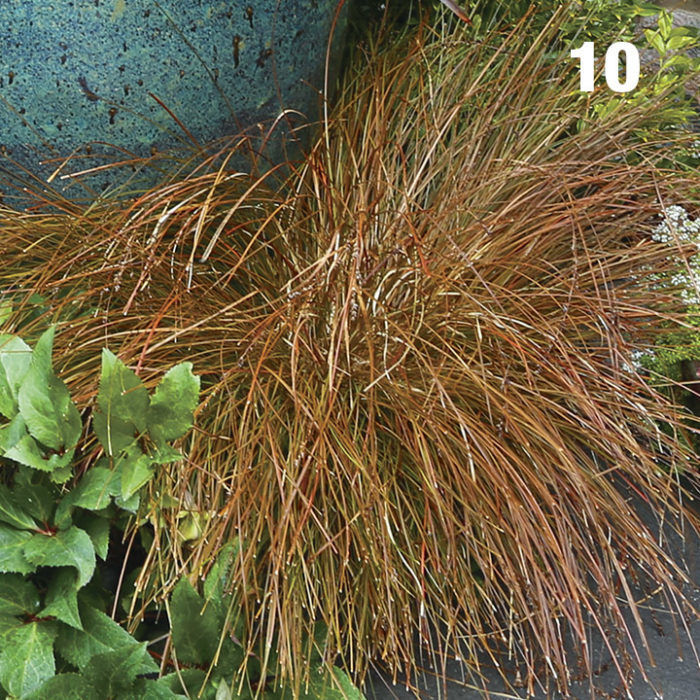
11. ‘Slowmound’ mugo pine (Pinus mugo var. ‘Slowmound’, Zones 2–9)
12. Sweet box (Sarcococca spp. and cvs., Zones 6–9)
13. Yew (Taxus spp. and cvs., Zones 4–9)
Stacie Crooks is a landscape designer in Seattle.
Fine Gardening Recommended Products

The Crevice Garden: How to make the perfect home for plants from rocky places
Fine Gardening receives a commission for items purchased through links on this site, including Amazon Associates and other affiliate advertising programs.

SHOWA Atlas 370B Nitrile Palm Coating Gloves, Black, Medium (Pack of 12 Pairs)
Fine Gardening receives a commission for items purchased through links on this site, including Amazon Associates and other affiliate advertising programs.
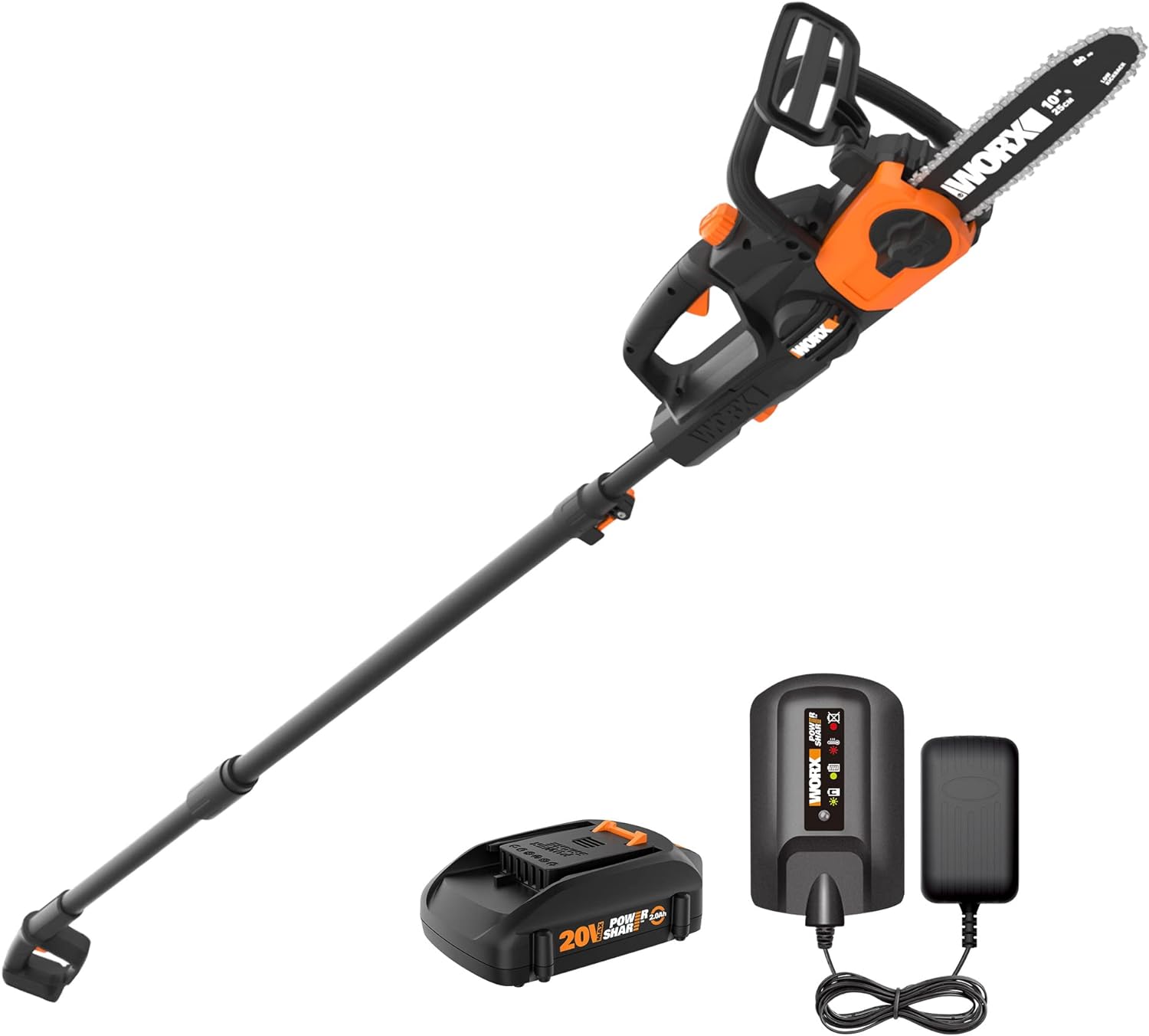
Fine Gardening receives a commission for items purchased through links on this site, including Amazon Associates and other affiliate advertising programs.


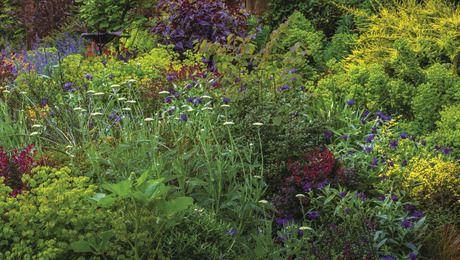
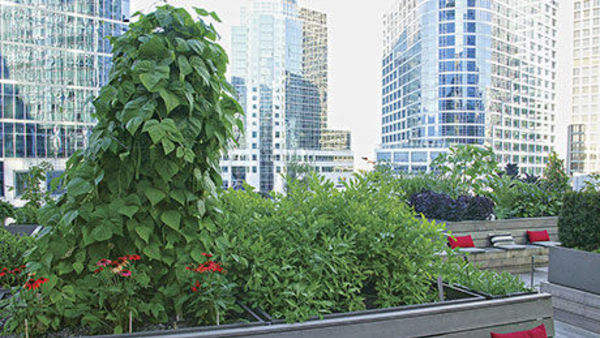














Comments
Log in or create an account to post a comment.
Sign up Log in